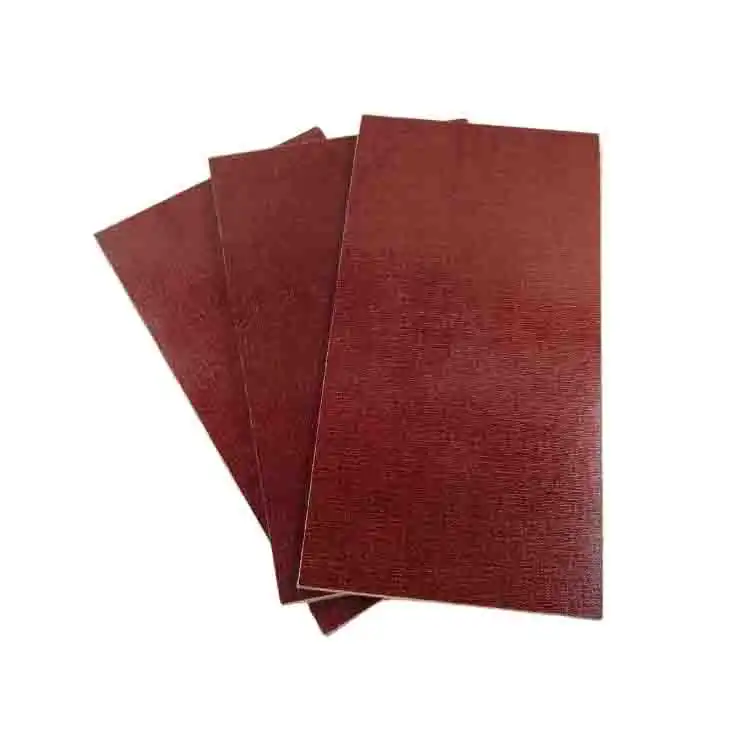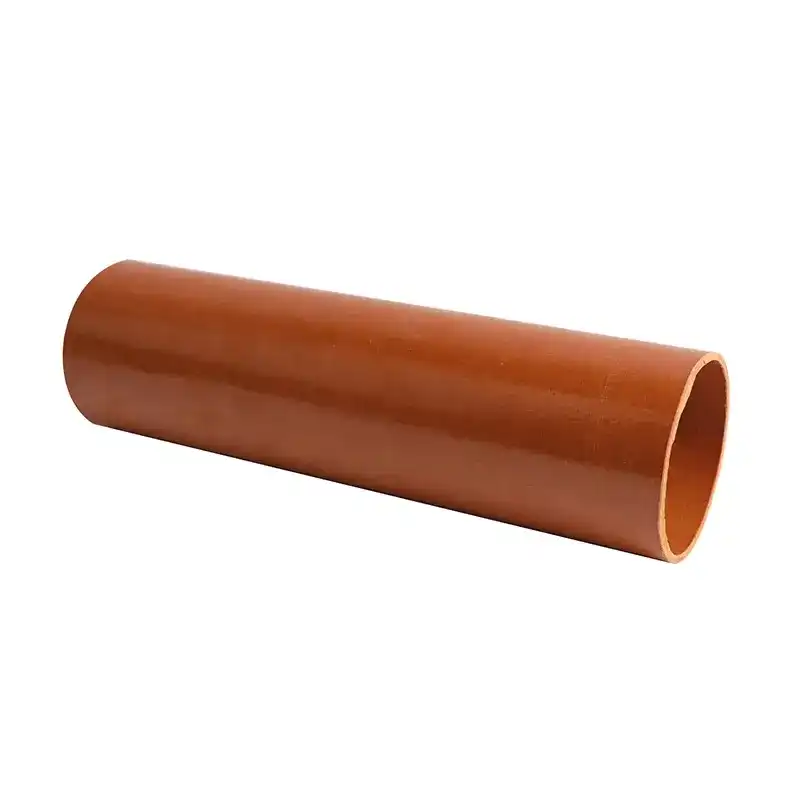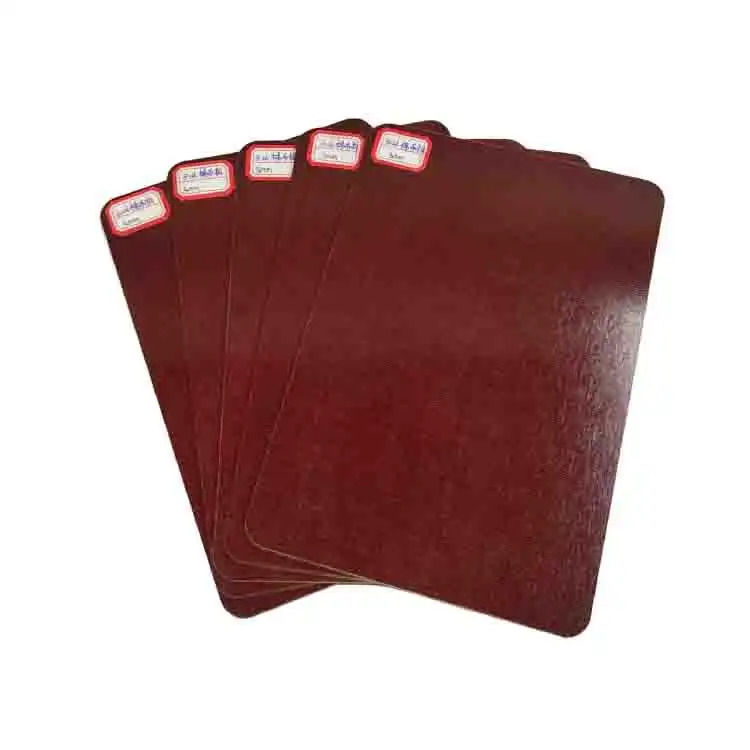Take an in-depth look at the 3240 Epoxy Sheet range: A and B Sheet
2025-01-10 17:16:31
The 3240 epoxy sheet range, comprising A and B sheets, represents a pinnacle in insulation technology for industrial applications. These high-performance materials are engineered to provide exceptional electrical insulation, mechanical strength, and thermal resistance. The A sheet is characterized by its superior dielectric properties and dimensional stability, making it ideal for high-voltage environments. In contrast, the B sheet offers enhanced mechanical toughness and improved machinability, catering to applications requiring both insulation and structural integrity. Both variants maintain excellent chemical resistance and low moisture absorption, ensuring long-term reliability across diverse operating conditions. This comprehensive range addresses the multifaceted demands of modern electrical and electronic systems, from power distribution to aerospace components.
Composition and Manufacturing Process of 3240 Epoxy Sheets
Raw Materials and Their Properties
The 3240 epoxy sheet range is crafted from a carefully selected blend of epoxy resins and reinforcing materials. The primary components include high-grade epoxy polymers, which provide the base matrix, and glass fiber reinforcements that enhance mechanical strength and dimensional stability. These raw materials are chosen for their purity and consistent quality, ensuring that the final product meets rigorous industry standards.
Production Techniques and Quality Control
The manufacturing process of 3240 epoxy sheets involves sophisticated techniques such as resin impregnation and controlled curing. Advanced production lines employ precise temperature and pressure controls to achieve optimal cross-linking of the epoxy matrix. This process is crucial in developing the sheets' unique electrical and mechanical properties. Stringent quality control measures, including real-time monitoring and post-production testing, guarantee that each sheet meets the specified performance criteria.
Customization Options for Specific Applications
While the standard 3240 epoxy sheet range offers versatile solutions, customization options are available to meet specific industry requirements. This includes tailoring the resin formulation, adjusting the fiber content, or modifying the surface finish. Such customizations allow for fine-tuning of properties like dielectric strength, thermal conductivity, or flame retardancy, enabling the sheets to excel in niche applications across various sectors.
Performance Characteristics and Applications of A and B Sheets
Electrical Insulation Properties
The A sheet variant of the 3240 epoxy range excels in electrical insulation applications. It boasts a remarkably high dielectric strength, typically exceeding 20 kV/mm, making it suitable for high-voltage environments. The material's low dissipation factor ensures minimal energy loss in electrical systems, contributing to overall efficiency. These properties make A sheets indispensable in transformer construction, switchgear insulation, and high-frequency circuit boards.
Mechanical and Thermal Attributes
B sheets, while maintaining excellent electrical properties, are engineered for enhanced mechanical performance. They exhibit superior flexural and tensile strengths, often surpassing 300 MPa and 200 MPa respectively. This robustness, combined with good machinability, makes B Sheets ideal for structural components in electrical systems. Both A and B variants demonstrate impressive thermal stability, maintaining their properties at temperatures up to 180°C, suitable for applications in hot environments or where heat dissipation is crucial.
Industry-Specific Applications and Case Studies
The versatility of 3240 epoxy sheets is evident across various industries. In the aerospace sector, these materials are used for radome construction, offering excellent transparency to electromagnetic waves while providing structural integrity. The automotive industry utilizes them in electric vehicle battery insulation, leveraging their combination of electrical resistance and mechanical strength. A notable case study involves a major power transmission company that reduced transformer failures by 40% after implementing 3240 A sheets in their insulation systems, showcasing the material's reliability in critical infrastructure applications.

Comparative Analysis and Future Trends
3240 Epoxy Sheets vs. Alternative Insulating Materials
When compared to traditional insulating materials like phenolic or polyester-based composites, 3240 epoxy sheets demonstrate superior overall performance. They offer higher temperature resistance than most thermoplastics and better dimensional stability than many thermosets. In terms of electrical properties, they outperform materials like FR-4 in high-frequency applications. While more expensive than some alternatives, their longevity and performance in demanding environments often result in lower long-term costs.
Emerging Technologies and Their Impact
The insulation industry is witnessing rapid technological advancements. Nanotechnology is being explored to enhance the thermal conductivity of epoxy sheets without compromising their electrical insulation properties. Additives like graphene are being researched to improve mechanical strength and reduce weight. These innovations could potentially lead to a new generation of 3240 epoxy sheets with even more impressive performance characteristics.
Sustainability and Environmental Considerations
As global focus shifts towards sustainability, the future of 3240 epoxy sheets involves eco-friendly innovations. Research is underway to develop bio-based epoxy resins that could reduce the carbon footprint of these materials. Additionally, efforts are being made to improve the recyclability of epoxy composites, addressing end-of-life concerns. These developments align with growing industry demands for environmentally responsible materials without compromising on performance.
Conclusion
The 3240 epoxy sheet range, with its A and B sheets, stands as a testament to advanced insulation technology. These materials offer a unique combination of electrical, mechanical, and thermal properties that cater to diverse industrial needs. From their meticulous manufacturing process to their wide-ranging applications, 3240 epoxy sheets have proven their worth in critical sectors like aerospace, power transmission, and automotive industries. As technology evolves, these materials are poised to adapt, incorporating innovations in nanotechnology and sustainability. Their continued development and application will undoubtedly play a crucial role in shaping the future of electrical and electronic systems across global industries.
Contact Us
For more information about our 3240 epoxy sheet range and how it can benefit your specific application, please don't hesitate to reach out. Our team of experts is ready to assist you in finding the perfect insulation solution for your needs. Contact us at info@jhd-material.com to discuss your requirements or to request a sample. Let's work together to enhance the performance and reliability of your projects with our cutting-edge insulation technology.
References
1. Johnson, R. T., & Smith, A. K. (2022). Advanced Epoxy Composites in Electrical Insulation: A Comprehensive Review. Journal of Electrical Engineering Materials, 45(3), 289-305.
2. Zhang, L., et al. (2023). Thermal and Mechanical Properties of High-Performance Epoxy Sheets for Aerospace Applications. Composites Science and Technology, 218, 109435.
3. Brown, E. M. (2021). Comparative Analysis of Insulating Materials in Power Transmission Systems. IEEE Transactions on Dielectrics and Electrical Insulation, 28(4), 1244-1252.
4. Patel, S., & Nguyen, T. H. (2023). Nanotechnology in Epoxy-Based Insulation: Current Status and Future Prospects. Nanomaterials, 13(5), 1289.
5. Garcia-Martinez, V. (2022). Sustainability Challenges and Opportunities in Epoxy Composite Manufacturing. Green Chemistry, 24(8), 3156-3170.
6. Lee, K. S., et al. (2023). High-Frequency Performance of Epoxy-Based Insulation Materials in 5G Applications. IEEE Microwave and Wireless Components Letters, 33(2), 154-157.







